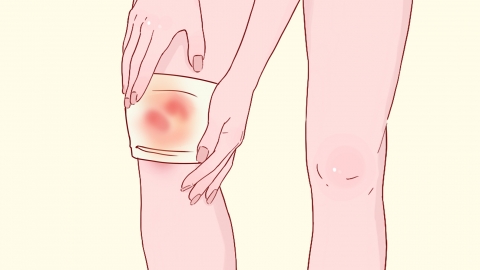Why does my knee hurt more after moxibustion?
Generally speaking, the knee refers to the knee joint. Knee joint pain after moxibustion may be caused by normal reactions, individual differences, burns, cold exposure, or knee arthritis. If discomfort occurs, timely medical consultation is recommended. Detailed analysis is as follows:

1. Normal Reaction
Moxibustion, as a traditional Chinese external treatment method, promotes local blood circulation through thermal effects, thereby achieving the effects of warming meridians to dispel cold and removing dampness to relieve pain. If the patient already has conditions such as rheumatism in the knee joint area, localized soreness may occur after moxibustion due to the expulsion of damp-cold. This is usually a normal reaction and generally does not require treatment. It is recommended to ensure that there are no wounds or infections on the knee area before performing moxibustion and to control the temperature and duration of the treatment to avoid excessive heat or prolonged stimulation.
2. Individual Differences
Different individuals may have varying responses and tolerances to moxibustion. Some people may be more sensitive to the thermal stimulation due to their constitution, leading to knee joint pain. It is recommended to start with low-intensity and short-duration moxibustion when trying it for the first time, gradually increasing intensity and duration as the body adapts.
3. Skin Burn
A burn may occur during moxibustion if the burning moxa is held too close to the skin or if the treatment lasts too long. After a burn, symptoms such as swelling and pain may appear on the skin surface, and in severe cases, blisters, skin breakdown, redness, and swelling may occur. Symptomatic relief may be achieved by using burn ointments, erythromycin ointment, ibuprofen sustained-release capsules, or other medications as directed by a physician.
4. Cold Exposure
After moxibustion, local pores remain open, and failure to keep warm may lead to cold exposure. This can cause pain in the knee area after moxibustion, possibly accompanied by localized swelling and restricted movement. It is recommended to use medications such as ibuprofen sustained-release tablets, acetaminophen tablets, or blood-activating and pain-relieving plasters under a doctor's guidance.
5. Knee Arthritis
Knee arthritis may be related to infection or autoimmune factors. Moxibustion may exacerbate the inflammatory response, leading to knee joint pain. Symptoms such as redness, swelling, and joint stiffness may also appear. Treatment options may include cefixime capsules, amoxicillin capsules, or compound betamethasone injection, as advised by a physician.
Before performing moxibustion, ensure that the knee area has no wounds or infections and control the temperature and duration of the treatment. After moxibustion, it is important to keep warm and avoid cold exposure. If you already suffer from conditions such as knee arthritis, moxibustion should be performed under medical supervision to avoid worsening the condition.





